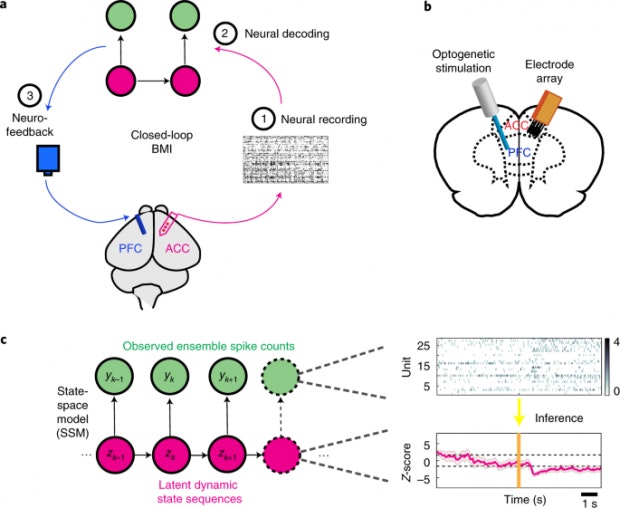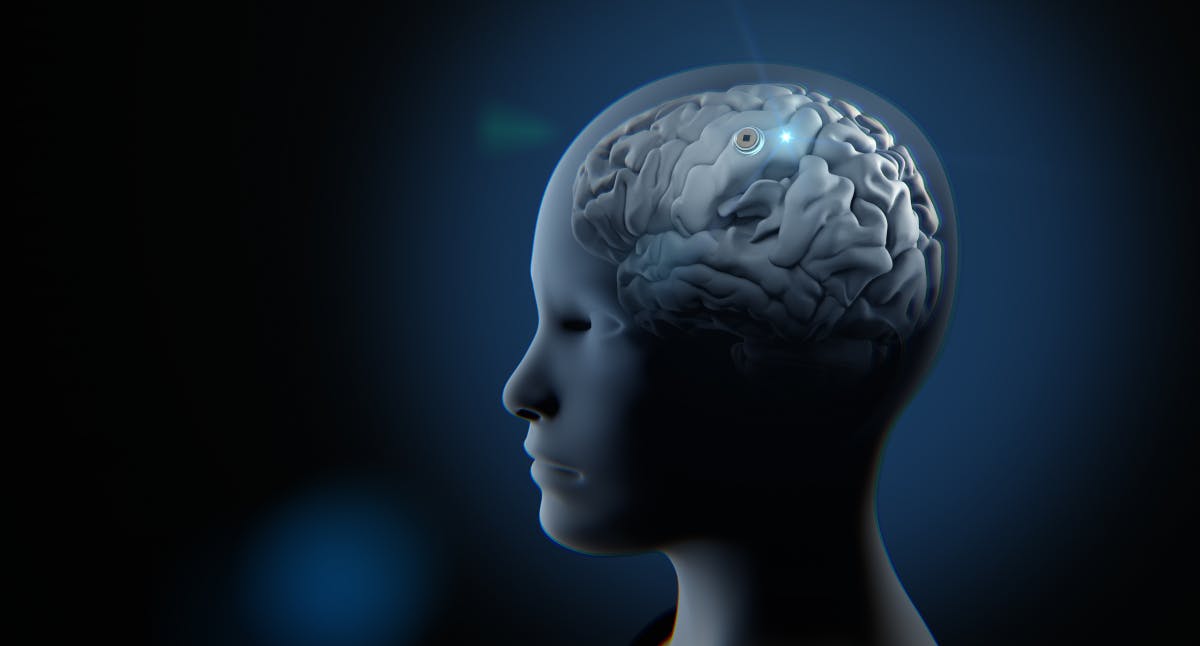Brain implant can detect and relieve pain
For the first time, a computer-assisted implant duo in the brain can detect pain that has no known trigger – and also alleviate it immediately.
Observers speak of a groundbreaking study when they hear about the latest Work by Jing Wang and his team at New York University Grossman School of Medicine. Through the interdisciplinary pain research program at New York University Langone, they brought in other neuroscience specialists. The pain medicine specialists developed a brain-machine interface (BMI) with a closed control loop to detect and combat pain.
The anterior cingulate cortex (ACC). (Image: Geoff B Hall, CC0)
Contents
This is how the brain-machine interface works
The way the system works is similar to that of the brain: one part identifies activity in a certain region, a switching point processes the information and then stimulates another area. The implant prototype has an array of electrodes in the anterior cingulate cortex (ACC), i.e. part of the cerebral cortex. The arrangement recognizes certain electrical patterns in the ACC that are associated with sensation of pain. An implanted chip takes over the task of the switching point: it evaluates the signals and reacts. When it detects pain, it activates stimulation of the prelimbic prefrontal cortex (PFC). Tests had shown that this reduced the pain. This sequence happens so quickly that medical professionals speak of “real time”. In the future, this system could help particularly chronic pain patients who are already insensitive to treatment with conventional painkillers. While the findings represent a breakthrough, the technology is just beginning and has only been tested on rodents so far.

The researchers show their brain-machine interface in a graphic. (Graphic: NYU Grossman School of Medicine)
Closed cycle “speculative”
“Our results show that this offers an effective strategy for pain management, even in cases where symptoms have traditionally been difficult to locate or manage,” said Wang. But it was a long way to get there. At first, the team faced the challenge that pain in the brain – in contrast to motor movements, for example – is generally difficult to localize. For this purpose it implanted the electrode arrangement in the ACC and experimented with it. The experiments showed that certain patterns occurred in 80 percent of the cases in which test animals had been inflicted with pain. So the researchers were faced with the next challenge: Linking the brain to itself. Instead of controlling an external system (such as a display) via the decoded signals, they wanted to activate an internal area via this in turn. There are hand prostheses that can already do this: electrical stimulators transmit pressure and temperature sensations, among other things, to remaining nerves. The brain decodes the signals and sends commands back via other nerve tracts to control the hand. Neuroscientists speak of a closed-loop system. Jing Wang’s team states that the use of closed-loop brain implants is “highly speculative”.
No addiction or habituation effects
They already had an “input arm for signal recognition”: the ACC, which has been proven to process pain in humans and animals. Now they had to choose the “starting arm for treatment”. Previous studies had shown that stimulating PFC neurons can relieve pain signals from the ACC. If the ACC portrays a crying child who stabbed their toe, the PFC is the parent who comforts it. The treatment took place via an optical fiber that stimulates PFC neurons. The fiber optic uses optogenetics, a method that uses light to control genetically modified neurons. Together, the system creates a real-time feedback loop that suppresses pain as soon as it occurs. A big advantage here is that PFC stimulation does not cause euphoria, such as opioids, and thus reduces the likelihood of dependence. Due to the selective relief, the brain does not get used to it so easily, so a habituation effect is less likely.
The scientists tested their system for sudden acute pain. The study calculated a pain relief of 40 percent. Mechanical and chronic pain – for example in the course of inflammation such as arthritis – have also been successfully reduced. Most recently, they were able to relieve neuropathic pain, i.e. through hypersensitive nerves and sensors, with the method. The authors of the study speak of a “blueprint” for upcoming pain therapies.
On the other hand, there is still a long way to go before it can be used in humans. The ACC is a central station for all kinds of sensations and has far-reaching connections to other brain regions. In addition to pain processing, functions such as empathy, decision-making and social behavior are assigned to him. “Since we don’t currently have specific anatomical targets for pain management, most of the brain regions will […] inevitably have unspecific effects ”, according to the authors.


